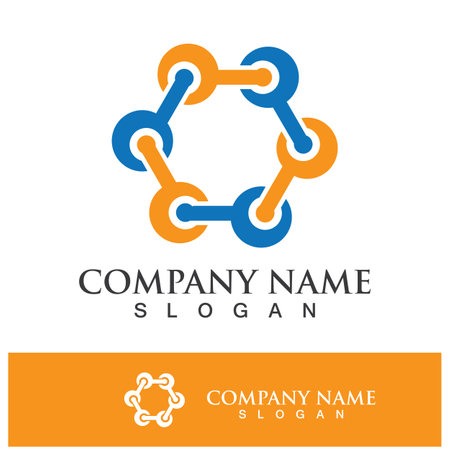Understanding Inclusive Branding in the UK Context
Inclusive branding has evolved as a central consideration for organisations seeking to resonate within British society. In the UK, inclusivity extends far beyond simply representing diverse faces in marketing materials. It is about authentically reflecting the country’s rich tapestry of identities, histories, and communities. The legacy of the UK’s multiculturalism—shaped by centuries of migration, colonial history, and the blending of regional cultures—means that brands must approach inclusion with sensitivity to these unique contexts.
The social framework in Britain places significant value on fairness, equality, and respect for difference. These principles are enshrined in both law and societal expectations, influencing how consumers perceive brands and their messaging. Furthermore, the distinct cultural landscape of the UK—from Scotland’s Gaelic heritage to London’s cosmopolitan vibrancy—demands nuanced understanding rather than one-size-fits-all solutions.
Historically, British brands have both reflected and shaped national identity. Today, however, there is an increasing expectation for them to act responsibly and proactively address issues like racial equity, gender representation, disability inclusion, and support for LGBTQ+ communities. For brands operating in this environment, inclusive branding is not just a trend but an ongoing commitment to building trust and fostering genuine connection with all segments of society.
2. Recognising Diversity: The UK’s Multifaceted Identity
Understanding inclusive branding within the UK context requires a clear-eyed recognition of the country’s complex social fabric. The United Kingdom is not a cultural monolith; rather, it is shaped by a confluence of histories, ethnicities, languages, religions, and lived experiences. For brands seeking to resonate authentically with UK audiences, mapping this diversity is both a strategic necessity and a mark of respect.
Identifying Key Communities and Perspectives
Modern Britain is home to people from every continent and an array of sociocultural backgrounds. These include but are not limited to Black British communities, South Asian populations, White British groups, Eastern European migrants, people of mixed heritage, and established Afro-Caribbean communities. Additionally, religious diversity is prominent with Christianity, Islam, Hinduism, Sikhism, Judaism, and non-religious identities all represented. Beyond ethnicity and faith, there are further layers such as regional identities (e.g., Scottish, Welsh, Northern Irish), LGBTQ+ communities, individuals with disabilities, and various socioeconomic groups.
Relevance to Brand Positioning
Brands that wish to operate successfully in the UK must consider these intersecting identities when shaping their messaging and visual identity. Inclusive branding goes beyond token representation; it involves reflecting genuine stories and ensuring that communications do not alienate or stereotype any group. This approach helps foster brand loyalty by signalling that all customers are seen and valued.
Illustrating Diversity in the UK: A Snapshot
| Community/Background | Approximate Population Share* | Key Considerations for Brands |
|---|---|---|
| White British | ~82% | Avoid assumptions of uniformity; embrace regional differences (e.g., Northern vs Southern England) |
| Asian/Asian British | ~8% | Recognise linguistic diversity (Punjabi, Urdu, Bengali) and varied religious practices |
| Black/Black British | ~4% | Respect cultural heritage; avoid clichés or stereotyping in campaigns |
| Mixed/Multiple Ethnic Groups | ~3% | Acknowledge intersectional experiences; use inclusive visuals and language |
| LGBTQ+ | N/A (estimated 3-6%) | Support visibility; demonstrate allyship through consistent action rather than one-off gestures |
*Data based on ONS 2021 Census and Stonewall estimates. Figures rounded for clarity.
The key takeaway for brands is clear: understanding the nuanced makeup of contemporary UK society isn’t simply about ticking boxes—it’s about building trust through thoughtful representation. Brands that invest time in recognising this complexity are better positioned to create meaningful connections across Britain’s diverse population.

3. Practical Strategies for Inclusive Brand Design
Creating an inclusive brand identity for UK-based audiences requires a thoughtful blend of design principles, language choices, and imagery selection. To truly resonate with the diverse communities across the United Kingdom, brands must move beyond surface-level gestures and embed inclusivity into every touchpoint.
Design Principles: Accessibility and Representation
An inclusive visual identity starts with accessible design. Brands should ensure their colour palettes are legible for those with visual impairments—avoiding problematic combinations like red-green or blue-purple—and use clear, readable fonts. Beyond accessibility, consider representation in design motifs. For example, the BBC’s rebrand incorporated subtle nods to different UK nations through patterns and symbols in their digital assets, providing a sense of shared ownership without tokenism.
Language: Localised and Respectful Communication
Language is a powerful tool for inclusivity. UK audiences respond positively to communications that reflect local dialects, respect cultural nuances, and avoid stereotypes. For instance, high-street retailer Marks & Spencer uses regionally aware copy in their campaigns—acknowledging everything from Scottish Hogmanay traditions to Diwali celebrations in London. Ensuring written content is gender-neutral and avoids ableist phrases is also essential for true inclusivity.
Imagery: Reflecting Real Diversity
Authentic representation in imagery means showcasing people from various backgrounds, ages, abilities, and family structures—not just as a tick-box exercise but integrated naturally throughout brand touchpoints. Campaigns such as Lloyds Bank’s “By Your Side” series have been praised for featuring real customers from across the UK, including LGBTQ+ couples and people with disabilities in everyday scenarios. This approach normalises diversity rather than spotlighting it as exceptional.
Localised Examples: Small Steps, Big Impact
Smaller UK brands are also making strides. Yorkshire Tea’s social media has championed British Sign Language awareness weeks, while cosmetics company Lush includes product descriptions in both English and Welsh in stores across Wales. These efforts demonstrate that inclusivity can be both strategic and contextually sensitive—strengthening bonds with local communities while setting a standard for national brands.
Ultimately, inclusive branding is not about ticking boxes; it is about building trust by recognising the full spectrum of identities present in the UK. Through intentional choices in design, language, and imagery—anchored by authentic engagement—brands can create spaces where everyone feels seen and valued.
4. Case Studies: UK Brands Leading the Way
In recent years, several UK brands have set new benchmarks for inclusive branding by thoughtfully representing the diversity found within British society. These brands demonstrate how authenticity and cultural awareness are not just ethical imperatives but also effective business strategies. Below, we spotlight a selection of leading examples, breaking down their approaches and the impact on both their audiences and broader brand equity.
Best-in-Class Examples of Inclusive Branding
| Brand | Approach to Inclusion | Key Initiatives | Impact |
|---|---|---|---|
| Channel 4 | Championing representation across ethnicity, disability, gender, and sexuality in mainstream media. | Altogether Different campaign; Paralympics coverage featuring disabled presenters; on-screen diversity targets. | Widely recognised as a trailblazer for authentic representation; increased viewer trust and engagement. |
| Tesco | Reflecting modern British family life in advertising; supporting underrepresented communities through supply chains. | Food Love Stories adverts with diverse families; supplier diversity programmes supporting minority-owned businesses. | Positive brand sentiment; improved community relations; enhanced customer loyalty across demographics. |
| The Body Shop | Campaigning for social justice and environmental responsibility as part of brand DNA. | Self Love Uprising campaign; activism for LGBTQ+ rights and anti-racism education; inclusive product ranges. | Strengthened reputation as an ethical leader; broadened appeal among socially conscious consumers. |
| Lloyds Bank | Normalising diversity in financial services marketing and accessibility. | By Your Side campaign featuring people with disabilities, same-sex couples, and various ethnic backgrounds; accessible banking initiatives. | Awards for inclusion; increased market share among marginalised groups; improved public trust scores. |
Cultural Sensitivity in Action
The common thread among these brands is a commitment to ongoing dialogue with their audiences and an openness to adapt based on feedback from real communities. Rather than relying on token gestures or one-off campaigns, these organisations invest in long-term partnerships, staff training on unconscious bias, and co-creation of content with diverse stakeholders. Their successes illustrate that UK consumers value brands which reflect the multicultural reality of the nation—both in outward messaging and internal practices.
Lessons Learned from UK Leaders
- Authenticity is essential: Superficial gestures are quickly recognised. The most effective brands ground their inclusive efforts in genuine values and sustained action.
- Diverse teams yield better results: Brands with leadership and creative teams that mirror the UK’s demographic mix are more likely to create resonant campaigns.
- Cultural awareness requires continuous learning: Staying attuned to evolving language, norms, and issues is critical for maintaining relevance and respectfulness.
Conclusion: Raising the Bar for Inclusive Branding in the UK
The achievements of these pioneering brands serve as practical case studies for others seeking to embed inclusivity into their identity. By championing representation at every touchpoint—from advertising to corporate governance—they are setting new standards for what it means to be truly British in a modern context. For organisations looking to follow suit, these examples highlight that success comes not just from reflecting diversity visually but from embedding it structurally throughout all facets of the brand experience.
5. Challenges and Opportunities
Implementing inclusive branding within UK-oriented identities presents a distinctive set of challenges and opportunities. As brands strive to authentically represent the diverse fabric of British society, they must first navigate a complex regulatory landscape. The UK upholds strict standards regarding equality, discrimination, and advertising ethics, enforced by bodies such as the Advertising Standards Authority (ASA) and the Equality and Human Rights Commission (EHRC). For brands, this means that inclusive campaigns must not only capture diversity in appearance but also avoid tokenism or stereotyping—balancing representation with genuine respect.
Regulatory Barriers
Regulatory compliance can be a significant barrier for both local SMEs and global brands entering the UK market. Advertisements must accurately reflect reality without misleading consumers or reinforcing harmful clichés. There is increasing scrutiny on campaigns that appear performative or insincere, with public backlash potentially leading to reputational harm. Brands need to stay informed of evolving guidelines and proactively audit their materials for inclusivity.
Ethical Considerations
Ethically, brands face the challenge of moving beyond surface-level gestures. The British public has grown more discerning about what constitutes genuine inclusion; mere visual diversity in adverts is often not enough. Brands are expected to show commitment through accessible products, fair employment practices, and community engagement. This requires ongoing dialogue with diverse groups and willingness to listen, adapt, and sometimes admit past shortcomings.
Practical Implementation
On a practical level, sourcing diverse talent for campaigns, ensuring accessible communication (such as providing alt-text or BSL interpretation), and adapting services for neurodiversity are all considerations that require investment and planning. Internal buy-in is crucial—without support from leadership and staff training, inclusive branding efforts may falter or appear disjointed.
Opportunities for Growth
Despite these barriers, the opportunities are substantial. Inclusive branding allows UK companies to foster trust with underrepresented communities, improve brand loyalty, and open new markets domestically and internationally. By embedding inclusivity into core values and everyday practice—not just marketing—brands can become recognised leaders in ethical business, attracting talent and customers who value social responsibility.
The path to truly inclusive branding in the UK is neither quick nor easy, but with thoughtful strategy and authentic engagement, the benefits far outweigh the challenges. Brands willing to do the work will find themselves better positioned in an increasingly diverse and socially conscious marketplace.
6. Future Trends: Where Inclusive Branding is Headed in the UK
Looking ahead, inclusive branding in the UK is set to evolve in response to both societal shifts and technological innovation. Brands are expected to move beyond surface-level representation, embracing intersectionality and deeper engagement with diverse communities.
Hyper-Personalisation Through Data and AI
The adoption of artificial intelligence and advanced data analytics will empower UK brands to understand nuanced identities at scale. This means marketing campaigns and brand touchpoints can be tailored with greater sensitivity to cultural, linguistic, and demographic diversity—making inclusivity feel more personal and less generic.
Co-Creation With Communities
A significant trend on the horizon is genuine co-creation. Brands are likely to collaborate directly with underrepresented groups, involving them in product design, campaign messaging, and even governance structures. This grassroots approach strengthens authenticity and builds lasting loyalty within communities that have traditionally been marginalised.
Accessibility as a Core Principle
Expect accessibility considerations—from digital platforms to physical spaces—to become non-negotiable aspects of brand identity. The ongoing shift towards universally accessible experiences aligns with both legal requirements and a moral imperative to serve everyone equitably.
Sustainability Intertwined With Inclusivity
As climate awareness grows, the intersection of sustainability and inclusivity will become increasingly prominent. British consumers are showing preference for brands that not only embrace diversity but also demonstrate social responsibility—leading to holistic brand narratives that reflect wider societal values.
Navigating Challenges: Authenticity Over Tokenism
The future will demand vigilance against performative inclusivity. Savvy UK audiences are quick to spot token gestures; therefore, authentic storytelling and consistent actions will be essential for credibility.
In summary, the next chapter for inclusive branding in the UK will see technology-enhanced personalisation, deeper community involvement, universal accessibility, and a merging of ethical priorities. Brands willing to invest in these areas are poised to lead—and inspire lasting change—in Britain’s dynamic marketplace.


